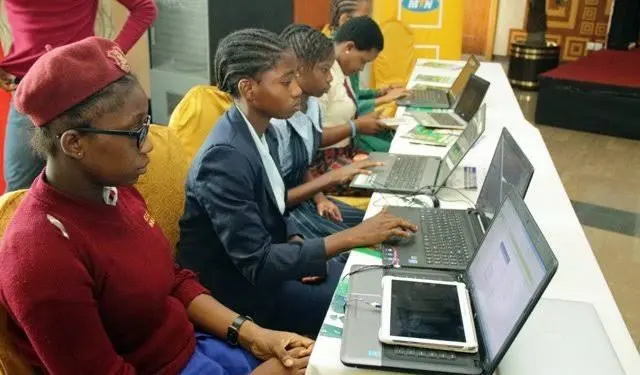
The world is rapidly witnessing unprecedented technological advancement. This cut across virtually all aspects of our daily activities, from home appliances to futuristic pursuits in Artificial Intelligence.
These advancements have improved our overall productivity, physical wellbeing, social life, and the world economy at large.
However, as the world is becoming increasingly digital, the disparity and inequality between men and women in the digital sector are glaring, especially in third-world countries. It is no secret that women’s contributions to societal development have been downplayed due to culture and toxic patriarchy in several societies of the world. Women are just as capable as men when it comes to not just science and technology, but every other field that men have trodden on and excelled in. A few examples of these women are Madame Marie Curie, Kathleen Johnson, Tahani Amer and so much more. We need a more gender-balanced society where women are provided with the same opportunities and resources to excel as their male counterparts.
The need for women to yield technology for their positive growth and development cannot be overemphasized. A UNESCO study shows that women in the tech industry constitute only 28% of professionals in the sector worldwide and just 30% in Sub-Saharan Africa. These UNESCO statistics throw into light the huge gap between women and men in exploring careers in science, technology, engineering, and mathematics, collectively known as STEM.
Women across developing countries need to harness technology in order to propel themselves to financial independence and a better life for themselves and their families.
A study by GSMA showed that women in some selected developing countries reported increased income and opportunities, higher independence, and safety by just owning and effectively using a mobile phone. Similarly, another study by Intel and The Web, which surveyed 2,200 women from India, Egypt, Mexico, and Uganda—reports that 77 percent of the women surveyed used the internet to further their education.
These findings show that access to and, importantly, the ability to understand and use technologies, can have a positive impact on women’s freedom of expression, education, and employment opportunities. In spite of these gains, however, women in emerging markets face significant barriers to technology access and adoption; challenges include cost, literacy, cultural norms, safety, and lack of understanding of potential applications. As a result, women in the developing world are up to 37 percent less likely to own a mobile phone than men, and, compared with men in developing countries, 25 percent fewer women use the internet.
The Importance of Technology to Women
In this era of digital enlightenment, women can effectively and efficiently develop themselves from the comfort of their homes. This can be done through workshops on digital literacy, and workshops on digital marketing, and content creation. These would result in a better understanding and integration of women’s needs into product development, marketing, and distribution, and information, and communications technology (ICT) companies can develop profitable new markets while supporting social progress for women. This will be very helpful in conservative communities where the integration of men and women in the workspace is always constrained.
Women also stand to hugely benefit from technology through the usage of social media applications for voicing out social and societal issues, creating online support groups for fellow women, and advertising their products through social media. Women that can use digital tools will be able to report harassment faster, gather support for fellow women, empower themselves and others and so much more. This will lead to a decrease in the crime rate and boost the economy.
For this to work, we must acknowledge the gender-specific and local needs of women which would target solving the demands of women without going against their culture, religion, or societal beliefs. The creation of safe working spaces, adapting local languages, and collaboration with organizations and authorities involved in women’s empowerment would also make the adaptation of women to technology easier and more successful. This must be approached in a bottom-top approach, where technology should be domesticated in homes and should be as local as possible.
The potential for technology to improve the lives of women and girls across the globe is cannot be overemphasized. A global women’s empowerment leader Jensine Larsen said “If we combine the best of the global technology industry with the ingenuity and resourcefulness of women on the ground to solve the digital divide challenge, we can unlock a colossal wave of human potential and freedom for future generations.”
IVolunteer International is a 501(c)3 tech-nonprofit registered in the United States with operations worldwide. Using a location-based mobile application, we mobilize volunteers to take action in their local communities. Our vision is to create 7-billion volunteers. We are an internationally recognized nonprofit organization and are also a Civil Society Associated with the United Nations Department of Global Communications. Visit our profiles on Guidestar, Greatnonprofits, and FastForward.

